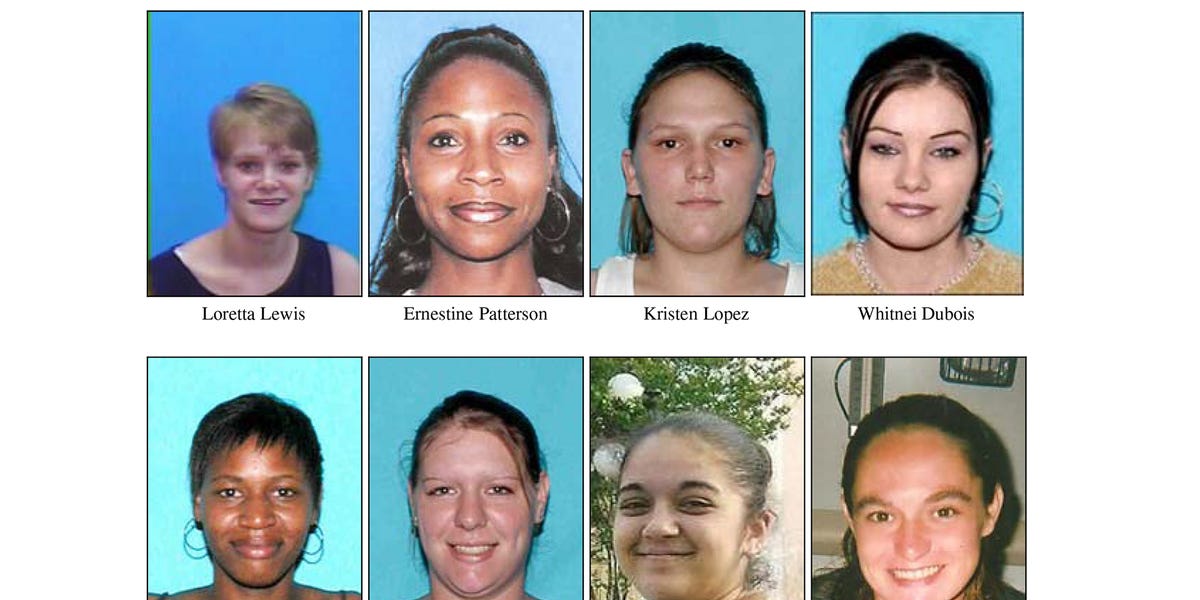Welcome to a chilling exploration of one of Louisiana’s Most Perplexing Unsolved Mysteries: the Jennings 8 murders. Between 2005 and 2009, eight women met tragic ends in or near Jennings, a small town nestled within the bayous of Jeff Davis Parish. These victims, known as the Jeff Davis 8, were often young women with histories of drug addiction and prostitution. Their lives intersected in ways that pointed to a web of connections, some seemingly entangled with local law enforcement.
The initial investigation, led by a task force assembled due to the growing public concern, Failed To Yield Any Convictions. Despite intense media scrutiny and public pressure, the case remained cold, leaving families grieving and communities gripped by fear. The lack of closure fueled speculation and whispers of conspiracy, casting a long shadow over Jennings.
Years later, journalist Ethan Brown delved into this unsettling saga in his book “Murder In The Bayou.” Through meticulous research and interviews, Brown paints a disturbing picture, suggesting that the Jennings 8 murders were not the work of a lone serial killer but rather a meticulously orchestrated cover-up involving powerful figures within the Local Law Enforcement Apparatus. His investigation implicated individuals within the Jefferson Davis Parish Sheriff’s Office and even hinted at connections to Louisiana Congressman Charles Boustany.
The Jeff Davis 8: A Grim Discovery in Jennings, Louisiana
The victims of the Jennings 8 murders were eight women whose lives tragically intertwined in this small Louisiana town. They were diverse in age and background, but often shared common threads: struggles with drug addiction and involvement in prostitution. Some had known each other through These Shared Experiences, while others seemed connected through their interactions with local law enforcement. Their deaths, scattered over a four-Year Period From 2005 to 2009, sent shockwaves through Jennings and beyond.
Each case presented its own unique set of circumstances, adding layers of complexity to the investigation. Some women were found brutally murdered in secluded areas around town, while others died under suspicious circumstances that pointed towards foul play. The manner of their deaths varied, with some cases involving blunt force trauma, while others suggested strangulation or poisoning. These inconsistencies fueled public speculation and raised questions about whether a single killer was responsible, or if multiple individuals were involved.
 Mad Dog Sullivan: Mafia Hitmans Life Of Crime And Escape
Mad Dog Sullivan: Mafia Hitmans Life Of Crime And EscapeThe discovery of these eight women’s bodies in such tragic circumstances cast a pall over Jennings. It shattered the illusion of safety within this close-knit community and left residents grappling with fear and uncertainty. The victims’ families were devastated, desperate for answers and justice. Their pleas for accountability echoed through the town as they demanded that those responsible be brought to light. This sense of urgency fueled public pressure on authorities to solve the Jennings 8 murders.
Unsolved Murders and a Shadow of Suspicion
Despite the gravity of the situation and the public outcry for justice, the investigation into the Jennings 8 Murders Remained Frustratingly Stagnant. A task force was assembled, bringing together investigators from various agencies to pool resources and expertise. They meticulously combed through evidence, Interviewed Witnesses, and pursued every lead, but their efforts seemed to hit a wall. The lack of concrete breakthroughs fueled public frustration and suspicion.
The passage of time only intensified the sense of unease within Jennings. As years went by without any arrests or convictions, whispers of a cover-Up Began To Circulate. Some residents expressed skepticism about the Official Narrative, questioning whether authorities were deliberately hindering the investigation. The victims’ families, desperate for answers and closure, felt increasingly marginalized and unheard. Their pleas for transparency and accountability fell on deaf ears, deepening their sense of despair.
The unsolved nature of these murders cast a long shadow over Jennings. It eroded trust in local law enforcement and left a gaping wound in the community. The fear that justice would never be served lingered like a heavy fog, stifling progress and hindering healing. The case became a chilling reminder of the vulnerabilities within small-town America, where power dynamics and corruption could potentially overshadow the pursuit of truth and accountability.
Ethan Brown’s Allegations: A Bayou Cover-Up
Journalist Ethan Brown took a deep dive into the chilling mystery of the Jennings 8 murders in his book “Murder In The Bayou.” Through meticulous research and interviews with Key Individuals, Brown painted a disturbing picture that challenged the official narrative surrounding these Unsolved Deaths. He alleged that the Jennings 8 were not victims of a random serial killer but rather pawns in a carefully orchestrated cover-up involving powerful figures within law enforcement and local politics.
Brown’s investigation pointed to a pattern of misconduct, Witness Intimidation, and potential involvement of high-ranking officials within the Jefferson Davis Parish Sheriff’s Office. He claimed that evidence had been mishandled or deliberately suppressed, hindering any attempts to bring the Perpetrators To Justice. His book also suggested links between the murders and Louisiana Congressman Charles Boustany, raising further questions about corruption and influence peddling at the highest levels of power.
Brown’s allegations sent shockwaves through Jennings and beyond, forcing a renewed scrutiny of the case. His work shed light on the dark underbelly of small-town America, where secrets are often buried deep and justice can be elusive for those who lack power or influence. The book served as a catalyst for public discourse, prompting calls for transparency and accountability from local officials and law enforcement agencies.
Police Misconduct and Local Involvement
Ethan Brown’s book “Murder in the Bayou” laid bare a disturbing pattern of police misconduct and alleged local involvement in the Jennings 8 murders. His investigation revealed instances where evidence appeared to have been mishandled or Deliberately Withheld From Investigators. Witnesses claimed to have been intimidated or coerced into silence, fearing reprisal for speaking out against powerful figures within the community.
Brown’s reporting implicated individuals within the Jefferson Davis Parish Sheriff’s Office, suggesting that they may have been complicit in covering up the truth About These Murders. He alleged that some officers had personal connections to suspects or potential witnesses, creating a conflict of interest that compromised the integrity of the investigation. The book raised serious questions about the ethical conduct and accountability of law enforcement in Jennings, casting a dark cloud over their reputation within the community.
These allegations fueled public distrust and Anger Towards Local Authorities. Residents felt betrayed by the very people who were supposed to protect them, demanding answers and transparency from those in power. The case became a stark reminder that even in small towns, corruption and abuse of authority could have devastating consequences for innocent victims and their families.
Justice Delayed? Unanswered Questions in the Bayou
Despite the tireless efforts of journalists like Ethan Brown and the persistent advocacy of the victims’ families, the Jennings 8 murders remain unsolved to this day. The passage of time has only deepened the sense of frustration and injustice within the community. The lack of closure continues to haunt those who lost loved ones in these tragic events, leaving them with unanswered questions and a lingering sense of grief.
While some progress has been made in shedding light on potential misconduct and corruption within law enforcement, no one has ever been held accountable for these brutal crimes. This prolonged delay in justice has fueled public anger and eroded trust in the legal system. Many residents believe that powerful individuals have conspired to protect themselves from scrutiny, ensuring that the truth remains buried beneath layers of secrecy and deceit.
The case serves as a stark reminder of the complexities surrounding criminal investigations, particularly in cases where power dynamics are at play. It highlights the importance of transparency, accountability, and unwavering pursuit of justice, even when facing resistance or obstruction from those in positions of authority. The unanswered questions in the Bayou Continue To Echo, demanding attention and action from those who have the power to bring closure to this tragic chapter in Jennings’ history.










